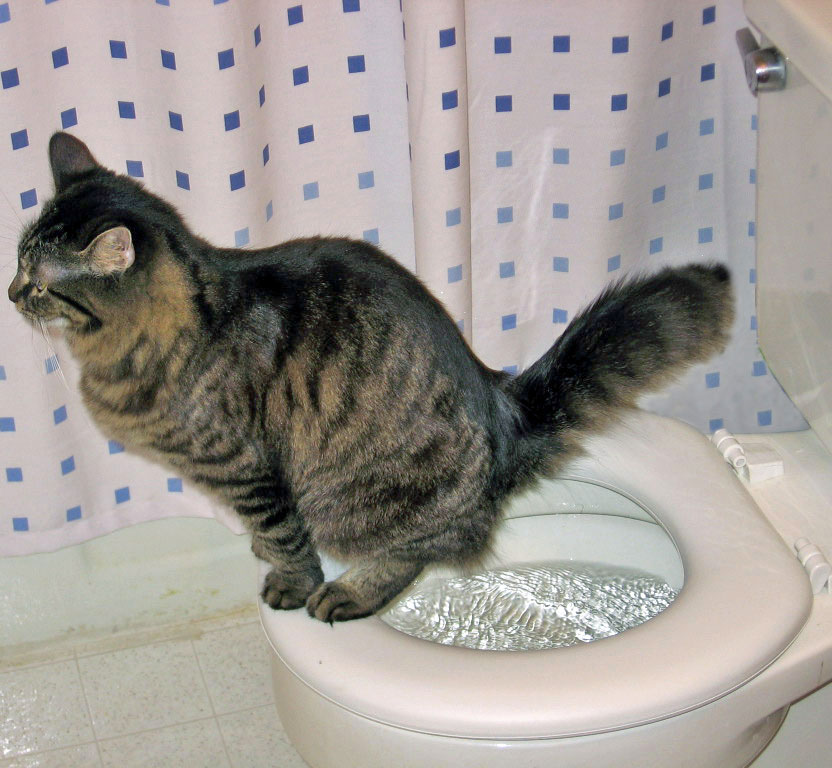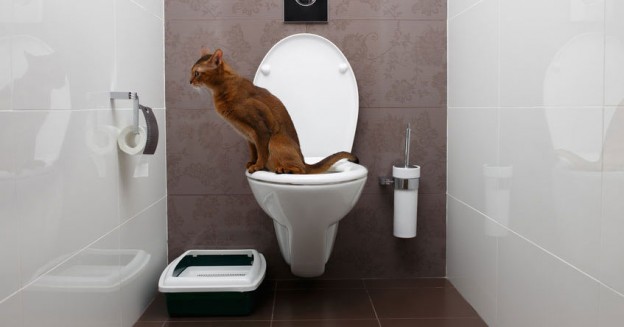Reasons Flushing Cat Poop Down Your Toilet May Cause Problems - Recommendations for Proper Handling
Reasons Flushing Cat Poop Down Your Toilet May Cause Problems - Recommendations for Proper Handling
Blog Article
Every person seems to have their private opinion when it comes to Don’t flush cat feces down the toilet.

Intro
As pet cat owners, it's necessary to bear in mind exactly how we take care of our feline buddies' waste. While it may seem hassle-free to flush feline poop down the toilet, this technique can have destructive consequences for both the environment and human health and wellness.
Environmental Impact
Purging pet cat poop introduces unsafe virus and parasites into the water system, positioning a significant danger to water ecosystems. These contaminants can negatively affect aquatic life and concession water top quality.
Wellness Risks
Along with environmental issues, flushing cat waste can also posture wellness dangers to people. Cat feces may have Toxoplasma gondii, a bloodsucker that can cause toxoplasmosis-- a potentially severe disease, specifically for expectant females and individuals with damaged body immune systems.
Alternatives to Flushing
Fortunately, there are much safer and much more accountable methods to get rid of cat poop. Consider the adhering to choices:
1. Scoop and Dispose in Trash
One of the most usual method of taking care of cat poop is to scoop it right into a naturally degradable bag and throw it in the trash. Make sure to use a dedicated clutter inside story and dispose of the waste immediately.
2. Usage Biodegradable Litter
Select eco-friendly feline litter made from products such as corn or wheat. These trashes are eco-friendly and can be securely dealt with in the trash.
3. Hide in the Yard
If you have a lawn, take into consideration burying pet cat waste in a designated location far from veggie gardens and water sources. Be sure to dig deep adequate to avoid contamination of groundwater.
4. Set Up a Pet Waste Disposal System
Invest in a pet dog garbage disposal system particularly developed for cat waste. These systems make use of enzymes to break down the waste, minimizing smell and ecological effect.
Conclusion
Liable pet possession extends beyond providing food and shelter-- it additionally entails appropriate waste management. By refraining from purging feline poop down the commode and opting for alternate disposal techniques, we can lessen our environmental footprint and shield human health and wellness.
Why Can’t I Flush Cat Poop?
It Spreads a Parasite
Cats are frequently infected with a parasite called toxoplasma gondii. The parasite causes an infection called toxoplasmosis. It is usually harmless to cats. The parasite only uses cat poop as a host for its eggs. Otherwise, the cat’s immune system usually keeps the infection at low enough levels to maintain its own health. But it does not stop the develop of eggs. These eggs are tiny and surprisingly tough. They may survive for a year before they begin to grow. But that’s the problem.
Our wastewater system is not designed to deal with toxoplasmosis eggs. Instead, most eggs will flush from your toilet into sewers and wastewater management plants. After the sewage is treated for many other harmful things in it, it is typically released into local rivers, lakes, or oceans. Here, the toxoplasmosis eggs can find new hosts, including starfish, crabs, otters, and many other wildlife. For many, this is a significant risk to their health. Toxoplasmosis can also end up infecting water sources that are important for agriculture, which means our deer, pigs, and sheep can get infected too.
Is There Risk to Humans?
There can be a risk to human life from flushing cat poop down the toilet. If you do so, the parasites from your cat’s poop can end up in shellfish, game animals, or livestock. If this meat is then served raw or undercooked, the people who eat it can get sick.
In fact, according to the CDC, 40 million people in the United States are infected with toxoplasma gondii. They get it from exposure to infected seafood, or from some kind of cat poop contamination, like drinking from a stream that is contaminated or touching anything that has come into contact with cat poop. That includes just cleaning a cat litter box.
Most people who get infected with these parasites will not develop any symptoms. However, for pregnant women or for those with compromised immune systems, the parasite can cause severe health problems.
How to Handle Cat Poop
The best way to handle cat poop is actually to clean the box more often. The eggs that the parasite sheds will not become active until one to five days after the cat poops. That means that if you clean daily, you’re much less likely to come into direct contact with infectious eggs.
That said, always dispose of cat poop in the garbage and not down the toilet. Wash your hands before and after you clean the litter box, and bring the bag of poop right outside to your garbage bins.
https://trenchlesssolutionsusa.com/why-cant-i-flush-cat-poop/

As a fervent reader about Don’t flush cat feces down the toilet, I imagined sharing that blog post was worthwhile. Be sure to set aside a second to share this page if you liked it. Kudos for your time. Don't hesitate to check up our website back soon.
Visit Link Report this page